Introduction

To do this, Nigeria relies on its vast natural endowments including natural gas and petroleum to fuel thermal power plants, rivers and vast inland water bodies to provide energy for hydropower generation and increasingly, the sun, to power various solar technologies.¹ The sector is dominated by thermal power plants at grid scale, captive industrial and commercial scale, and residential standalone or housing estate generation.
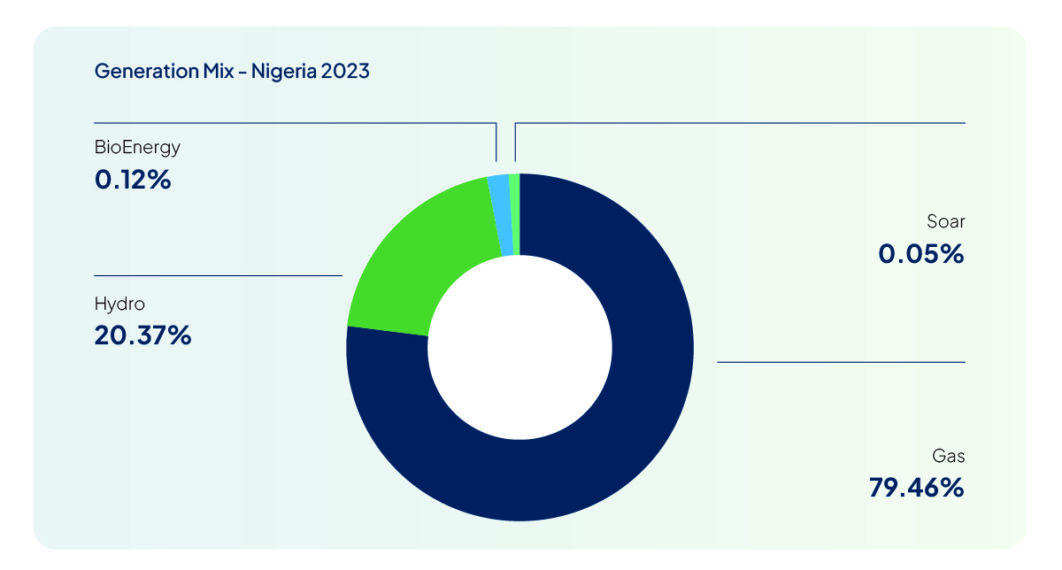
Hydropower is an important component of the Nigerian generation mix, providing 20% of the electricity on the national grid.2
This article explores the present and potential future roles of hydropower, specifically small hydropower (SHP) schemes in addressing energy poverty. Currently, the generation of electricity from hydropower schemes accounts for 55% of global renewables followed by wind (23%), biomass (13%), and solar (7%).3
Brief Technology Background
The generation of electricity from running water is a mature technology, with the basic dominant designs of hydropower plants having been developed in the mid-19th century.
In 1849, British–American engineer James Francis developed the first modern water turbine – the Francis turbine – which remains the most widely-used water turbine in the world today. In the 1870s, American inventor Lester Allan Pelton developed the Pelton wheel, an impulse water turbine, which he patented in 1880. 4 The Francis turbine is an example of a reaction turbine, which utilises both the flow and pressure of water to turn. This type of turbine is ideal for generation where there is a large volume of water, even if the flow velocity is low.
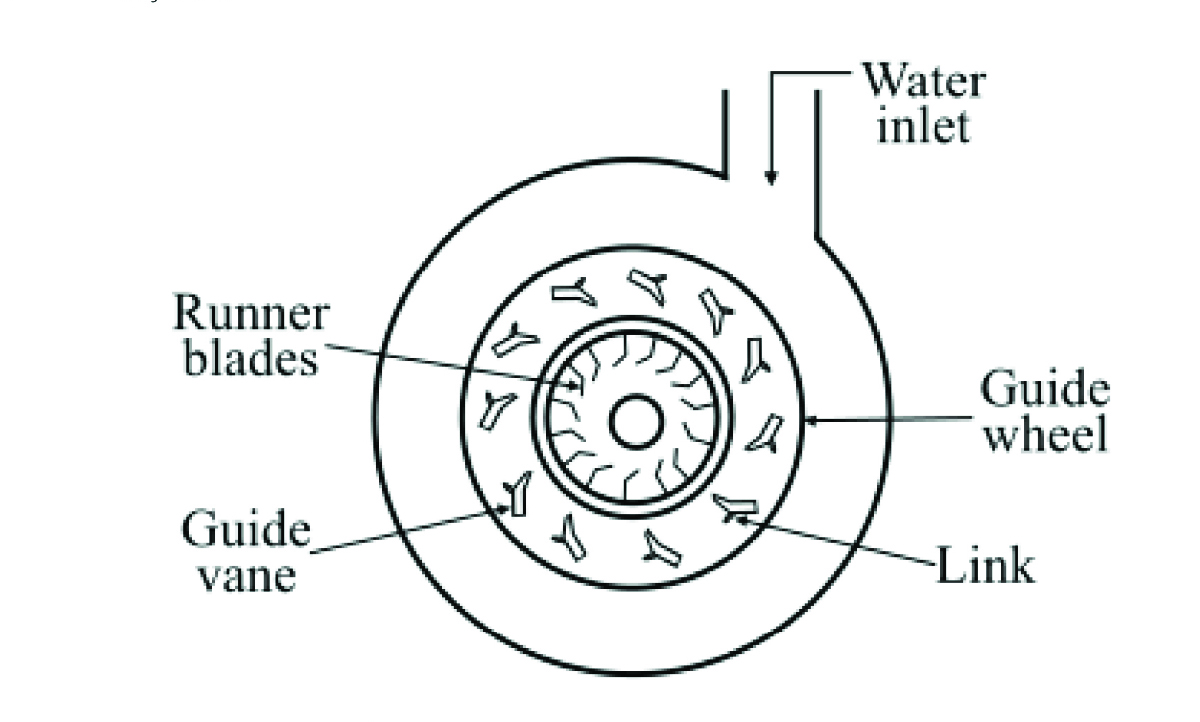 Figure 1: Schematic of Francis Turbine 5
Figure 1: Schematic of Francis Turbine 5
The Pelton turbine on the other hand is an example of an impulse turbine, which depends only on flowing water hitting its blades to turn. The Pelton turbine is most suited to situations of high flow velocity.
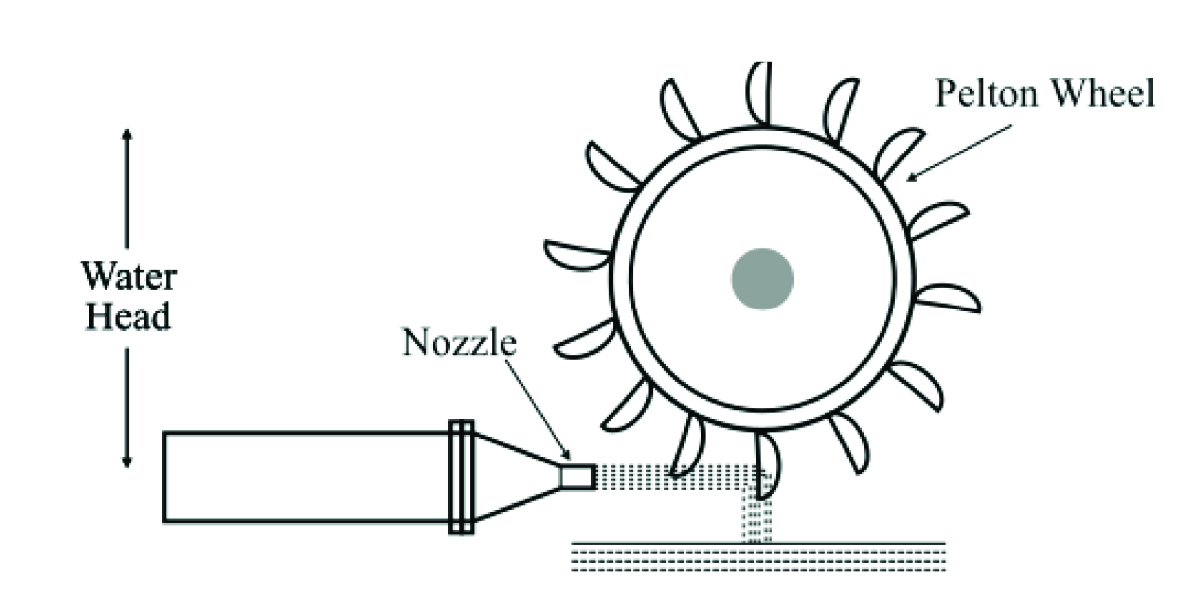
Figure 2: Schematic of Pelton Turbine 6
There are other refinements of these two basic designs, most famous of which is the Kaplan turbine which combines the characteristics of the Francis and Pelton turbines to be suitable for applications in a wide range of applications.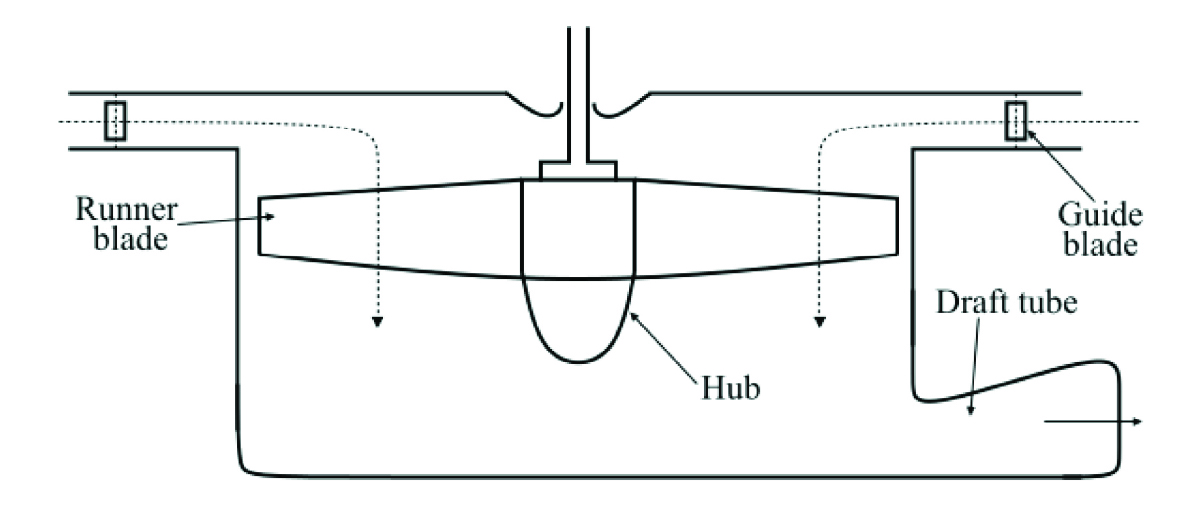
Figure 3: Schematic of Kaplan Turbine 7
The rotating parts of both reaction and impulse turbines are coupled to the rotors of generators where, the rotor spinning in a magnetic field, generates electricity.
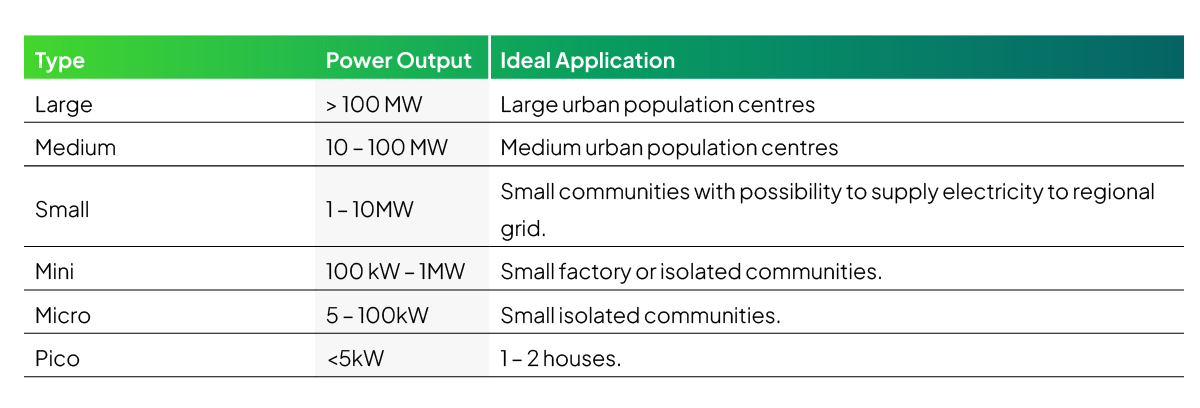
Hydropower plants are generally classified according to their capacity. 8
This paper addresses small hydropower plants, that is, in the region of 1 to 10MW in capacity. This is an interesting capacity range as it is large enough to contribute measurably to the nation’s electrification drive, whilst being small enough to be funded by small to medium-sized developers, using local financial institutions. It has also been found that hydropower plants of this size cause minimal environmental and social changes.
The main lure for hydropower stations is their off-grid applications for residential and commercial purposes. Currently, the rural electrification agency believes off-grid systems should empower 14% of the population whilst providing power to 250,0000 SMEs.9 In pursuit of this SHPs favoured by countries like China for connecting far-off areas can be deployed to achieve this goal. Their commencement creates jobs during construction, operation, and maintenance phases, thereby stimulating local economies and providing revenue streams through electricity sales.
The deployment of Small Hydropower (SHP) systems presents advantages to investors and government bodies due to its cost-effectiveness. As highlighted by the American Council on Renewable Energy (ACORE) which posits hydropower as the most economical option among renewable energy sources.10 This cost-efficiency of hydropower plants exists thanks to advancements in technology; Improved turbine innovation allows for greater energy extraction from the same amount of water,11 and advances in Computer-Aided Design (CAD) enable engineers to optimize turbine shapes and configurations for maximum efficiency.12
These innovations make SHPs a financially viable solution for investors and government agencies aiming to provide cost-effective electricity to remote areas and bolster the country’s Electricity market.
Nigerian Electricity Market
Statistics suggest that only 85 million (59.5%) of Nigeria’s 200 million people have access to electricity from the national grid.13 The majority of the unconnected belong to the rural population, residing in remote locations. With a significant proportion of the population not connected to power and shortages of power for even those that are connected, it is obvious that there is a need for more power – however, it must be noted that a need for power does not necessarily translate to a market as a true market requires the presence of buyers with the capacity to pay for the service offered. That is, the electricity must be offered at a cost that potential consumers can bear, to have a viable and serviceable market. This consideration leads directly to a consideration of how the Nigerian power sector is organised.
Structure of the Nigerian Electricity Sector
The power sector value chain can be said to be made up of primarily three main components, generation, transmission and distribution, with supporting functions in system operations and market operations.
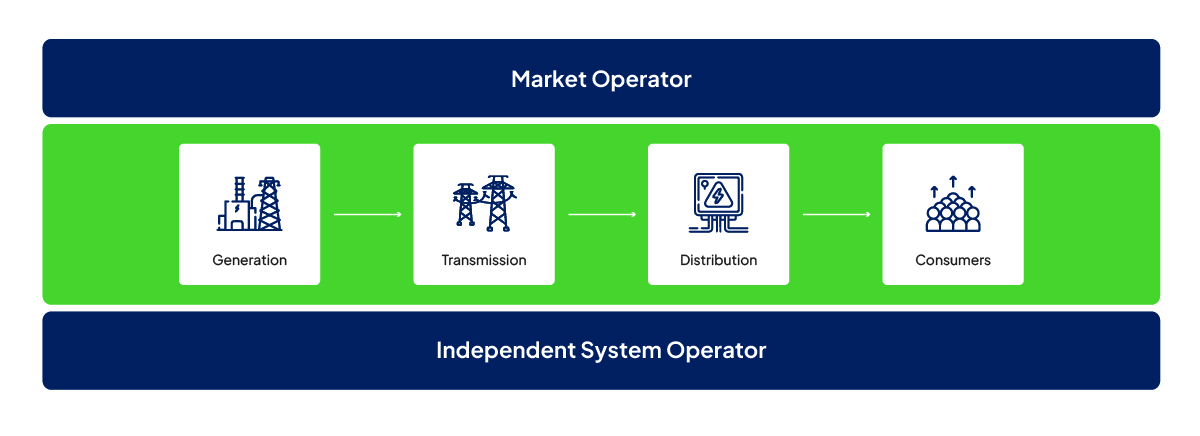
Since November 2013, different private and public sector players have had roles in this value chain, taking over from the previous national utility.14 With different sector participants, the success of the sector has been dependent on ensuring that risk and reward are equitably allocated along the value chain to incentivise investments and efficient operations. New regulations, promulgated in 2023 are starting to shake up this traditional structure, allowing for commercial structures that more directly link consumers to electricity producers.
The effective organisation of the sector should be such that it is financially sustainable, with the income generated from consumers being enough to finance operations of the entire value chain and provide sufficient funds to pay for investments in growth in capacity and service quality as needed. Efforts at increasing electricity access have remained focused on large-scale projects requiring extensive capital such as the $4.8 billion Mambilla project,15 $3 billion Makurdi Power plant?16 and $1.8 billion Zungeru power plant.17 Analysis of data released by the Nigerian Electricity Regulatory Commission (NERC), shows that 43 power generation, from 2021-2022 failed to contribute substantially to the national grid allowing the electricity crisis to linger on.18 Undoubtedly, electricity is directly linked to development, and the exclusion of 85 million Nigerians without access to it is a hindrance to the progress Nigeria seeks. Nonetheless, this can be upturned by actively exploring the “low-hanging fruits” in the power generation space to increase electricity availability and access. It is in this regard Small Hydro Power Plants (SHPs) become very important.
Nigeria, A Treasure Trove of Small Hydropower Opportunities
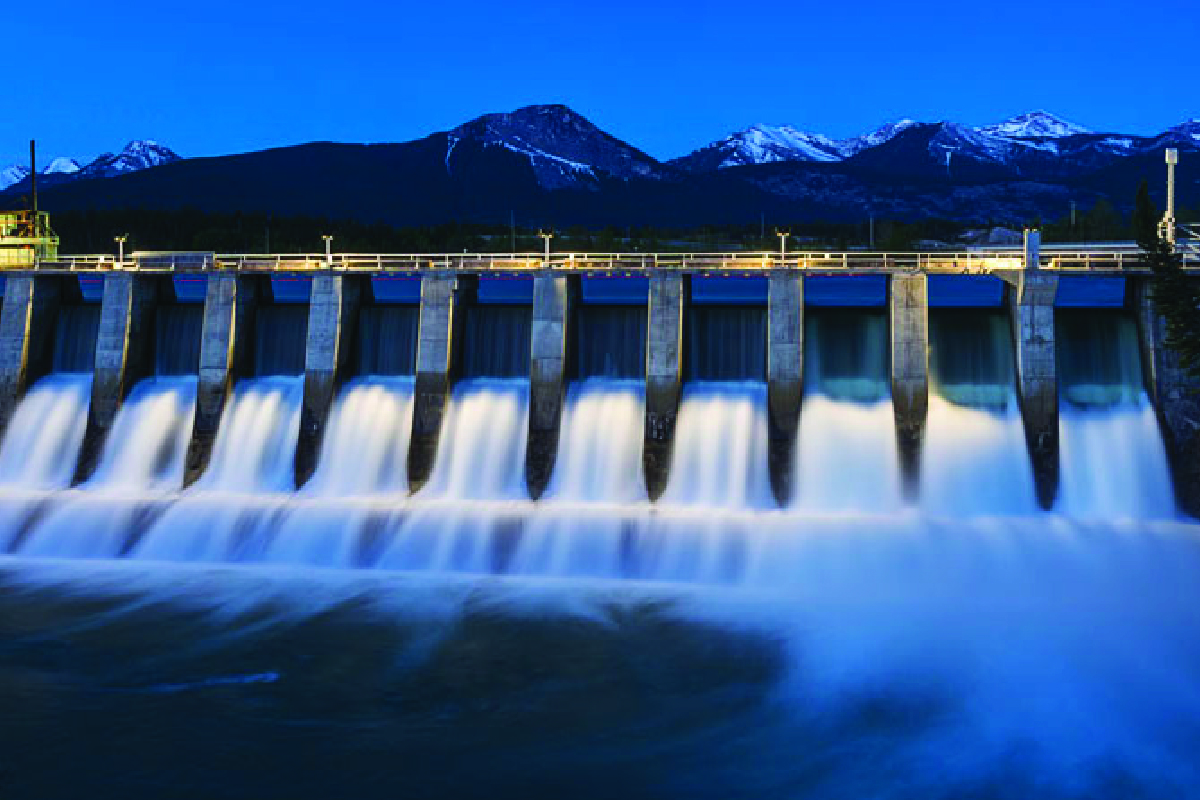
Hydropower stations are facilities built to harness the energy of flowing water to generate electricity. These stations typically consist of structures such as dams, reservoirs, intake structures, turbines, generators, and transmission lines. The basic principle involves using the kinetic energy of water flow to turn turbines, which then convert this mechanical energy into electrical energy through generators. Small hydropower stations, typically defined as facilities with a capacity of up to several megawatts, harness the natural energy of flowing water to generate electricity. Unlike large-scale hydroelectric dams, which can have significant environmental impacts and require massive infrastructure, small hydropower projects have a relatively small footprint and minimal disruption to local ecosystems.
Records place small hydro usage in Nigeria 45 years before the establishment of the first large-scale Kanji dam.19 Current hydropower potential is estimated at 14,120 MW,20 with the largest hydropower plants being Kainji (760 MW) Jebba HPP (578 MW) on the River Niger, and Shiro HPP (600 MW).21 In addition to these, numerous small hydro schemes dot around the Jos – Plateau region under the auspices of the National Electricity Supply Company (NESCO), contributing 19 MW.
Nigeria, with over 200 small rivers, is a treasure trove for SHP. As of 2005, recognized SHP prospective stood at 734.2 MW.23
In 2008, the Federal Ministry of Power through the Project Management Unit of PHCN in collaboration with NovaTech International and a partnership with UNIDO Regional Center found 200 sites worthy of SHP exploration24 and recent geo research by VIDA declares the country as a hotbed of small hydropower potential.25
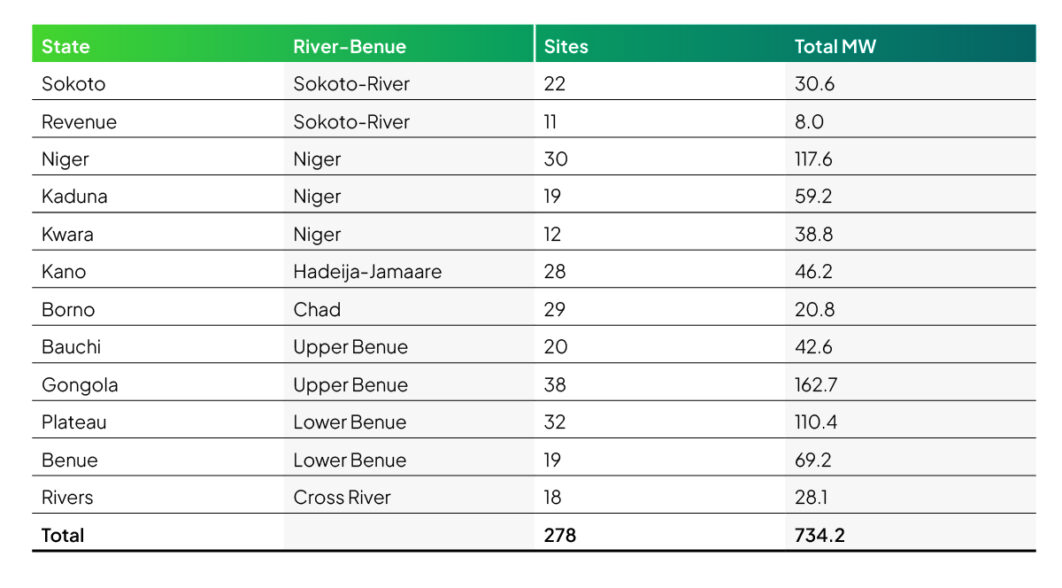 Figure showing surveyed SHPs sites totalling 734.2 MW in Nigeria 26
Figure showing surveyed SHPs sites totalling 734.2 MW in Nigeria 26
The main lure for hydropower stations is their off-grid applications for residential and commercial purposes. Currently, the rural electrification agency believes off-grid systems should empower 14% of the population whilst providing power to 250,0000 SMEs.27 In pursuit of this SHPs favored by countries like China for connecting far-off areas can be deployed to achieve this goal. Their commencement creates jobs during construction, operation, and maintenance phases, thereby stimulating local economies and providing revenue streams through electricity sales.
The deployment of Small Hydropower (SHP) systems presents advantages to investors and government bodies due to its cost-effectiveness. As highlighted by the American Council on Renewable Energy (ACORE) which posits hydropower as the most economical option among renewable energy sources.28 This cost-efficiency of hydropower plants exists thanks to advancements in technology; Improved turbine innovation allows for greater energy extraction from the same amount of water,29 and advances in Computer-Aided Design (CAD) enable engineers to optimize turbine shapes and configurations for maximum efficiency.30 These innovations make SHPs a financially viable solution for investors and government agencies aiming to provide cost-effective electricity to remote areas.
Currently, small hydropower stations are classified into pico, nano, and micro, according to MW output, and the Nigerian small hydropower scheme pegs 30 MW 31 as the limit of small hydropower stations.
 Figure showing the classification of small hydropower stations 32
Figure showing the classification of small hydropower stations 32
Small Hydropower in Action: A Nepal Case Study in Nigeria

Situated in Southern Asia, Nepal boasts one of the lowest GDP per capita incomes in the region, at $1,337. However, the country achieves an impressive 90% electrification rate.33 With 78.55% 34 of its population residing in rural areas, small hydropower plants are pivotal in Nepal’s electrification strategy led by the Alternative Energy Promotion Centre(AEPC),35 Nepal’s renewable agency.
Recent studies by AEPC36 reveal the following finds on Nepal’s exploration with small hydropower:
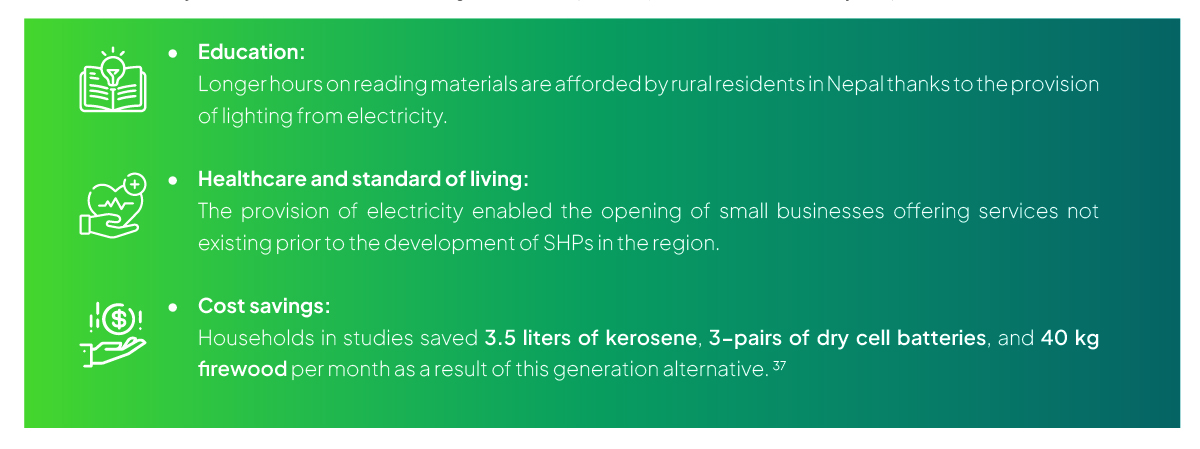
The World Bank’s development of 4000 micro hydro stations from 2007 -2014, saving 66345 tons of carbon in 2015,38 substantiates the impact of SHPs in Nepal. Worth mentioning is Nepal’s Rs 10.42 billion energy export to India thereby ranking power amongst its top 5 export products from 2022-2023.39
While Nepal’s per capita income stands at $1,337, Nigeria stands at $2,23740. The advantages of small hydropower can therefore be achieved in Nigeria. Case studies by Atoyebi and Isaac in discovering SHPs potential of small rivers like River Otin reveal a 178KW potential after theoretical calculations of (P), Flow rate (Q), Head (H) and Gravity (G) were considered.41
Several unconnected communities in Nigeria dot around rivers similar to the Otin River and harnessing the electric potential of water bodies close to them should be encouraged.
A necessary requirement as seen in China where hydropower plants witnessed an upsurge 42 are friendly policies. In Nigeria, a breakthrough has been made in encouraging this rapid development by way of policies encouraging the development of renewables of all forms.
Policies Available For The Development Of Small hydropower in Nigeria
Diverse electricity legislations dominated the Nigerian electricity scene until the Electricity Act 2023 (as amended) [the “Act”] was passed.43 The Act harmonizes electricity legislation and successfully brings the advantages of privatized sectors such as competitiveness and fair play into being.
The most relevant to the development of hydropower in Nigeria include:
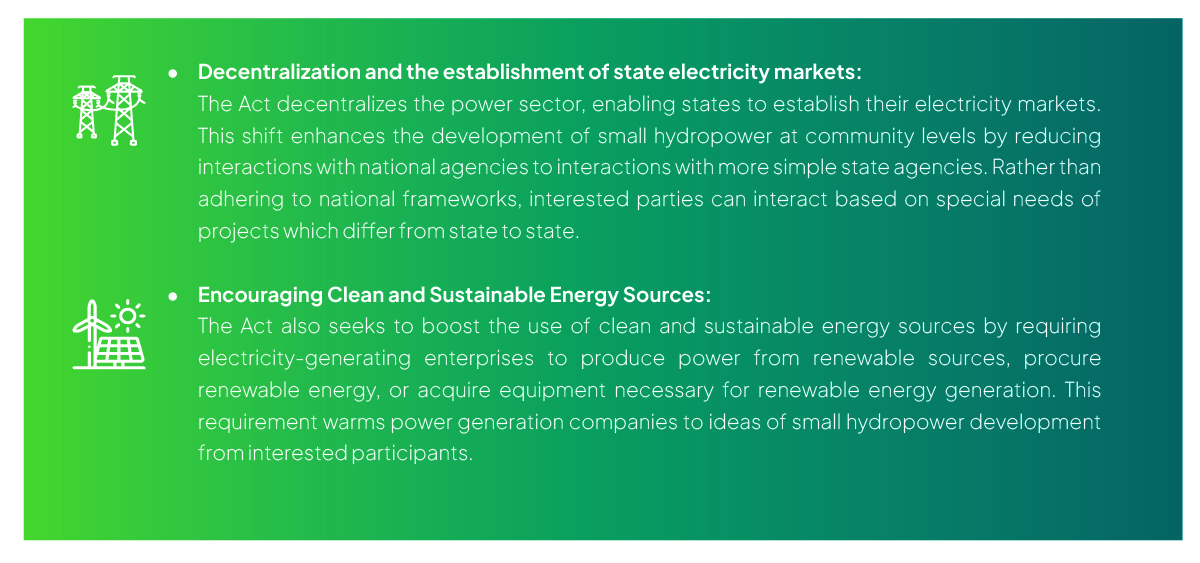
The Act also allowed for the continued existence of the following agencies to help create an enabling environment for the development of power projects: Transmission Company of Nigeria (TCN), Nigerian Energy Regulatory Commission (NERC), Federal Ministry of Power (FMP) and the Bureau of Public Enterprises. Of mention are agencies not created under the act but instrumental towards the development of electricity projects like small hydro plants such as the River Basin Development Authorities (RBDA), Integrated Water Resources Management Commission (IWRMC) and the Infrastructure Concession Regulatory Commission (ICRC).
Challenges For Hydropower Station
Hydropower, a renewable energy source with immense potential, faces several challenges hindering its development and integration into the energy mix. A case study in Nepal where hydro consists of 90% of power generation with 25% 44 being small hydro showcases challenges of SHP in developing countries.
These challenges are summed up below:
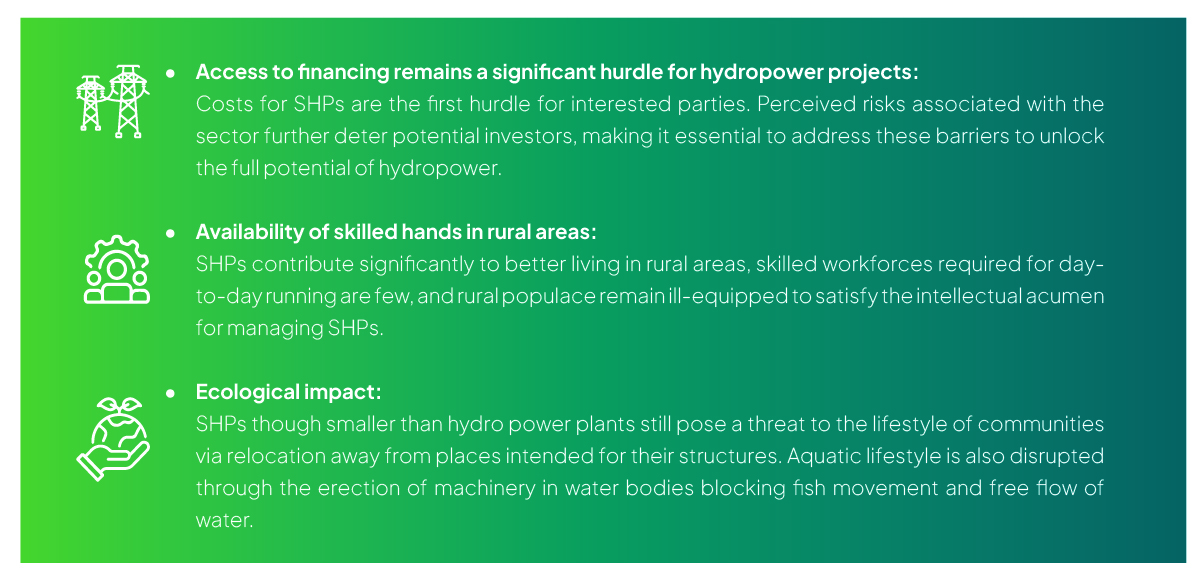
The challenges posed by Small Hydropower Projects (SHPs) such as financing, skilled labour, and ecological impact are considerable but manageable. For instance, despite the lower cost of deploying SHPs compared to large-scale hydro projects,45 financial hurdles can be further reduced through the support of Development Finance Institutions (DFIs) and public-private partnerships (PPPs). The issue of skilled labour can be addressed through training programs and partnerships with nearby universities, as recommended in the 2008 SHP tour.46 Additionally, technologies like fish ladders help mitigate the minimal ecological impact of small hydropower stations.47
Developing Small Hydropower Plants Could Resolve Internal Electricity Challenges And Pave The Way For Increased Power Exportation.
Nigeria engages in electricity trade with neighbouring Niger, Benin and Togo,48 a trade accruing $369 million in foreign exchange from 2021-2022 alone.49 Despite this promising trade, significant challenges persist due to domestic inefficiencies, particularly inadequate infrastructure for distributing power sufficiently within its borders. The inability of the power sector to satisfy the internal demand for electricity limits the volume of electricity exported to other countries as logically, countries must first have excess amount of electricity prior to increasing the amount exported.
As explored in our previous article the need to export electricity extends beyond earning foreign exchange but grants the nation regional relevance equivalent to the kind enjoyed by Russia wherein its supply of 40% of gas needs in Europe emphasizes its relevance.50 Worsening situations in the power sector have further limited the trade with neighbouring countries as this year, NERC issued a 6% cap on electricity export beginning May 1st , 2024.51 This limitation not only reduces foreign exchange earnings but could potentially diminish Nigeria’s regional significance at a time when international engagement is crucial for currency stability and global positioning.
A direct approach to resolving domestic power supply issues would be the further investigation and development of Small Hydro Power (SHP) in Nigeria rather than imposing limitations which could potentially diminish the country’s relevance to the region. SHP potentials can be fully realized to serve nearby communities, alleviate pressure on the national grid, and thus free up power for regional export. Several underserved areas, such as those surrounding River Yedseram in Adamawa with its tributaries, present opportunities for satisfying the electricity needs of underserved areas particularly rural ones. The hydro potential of this river alone (River Yedseram ), estimated at around 10MW,52 could power nearby communities while also facilitating irrigation for agrarian societies during dry spells. By harnessing such resources, Nigeria can not only enhance its domestic energy security but also strengthen its position as a regional power supplier.
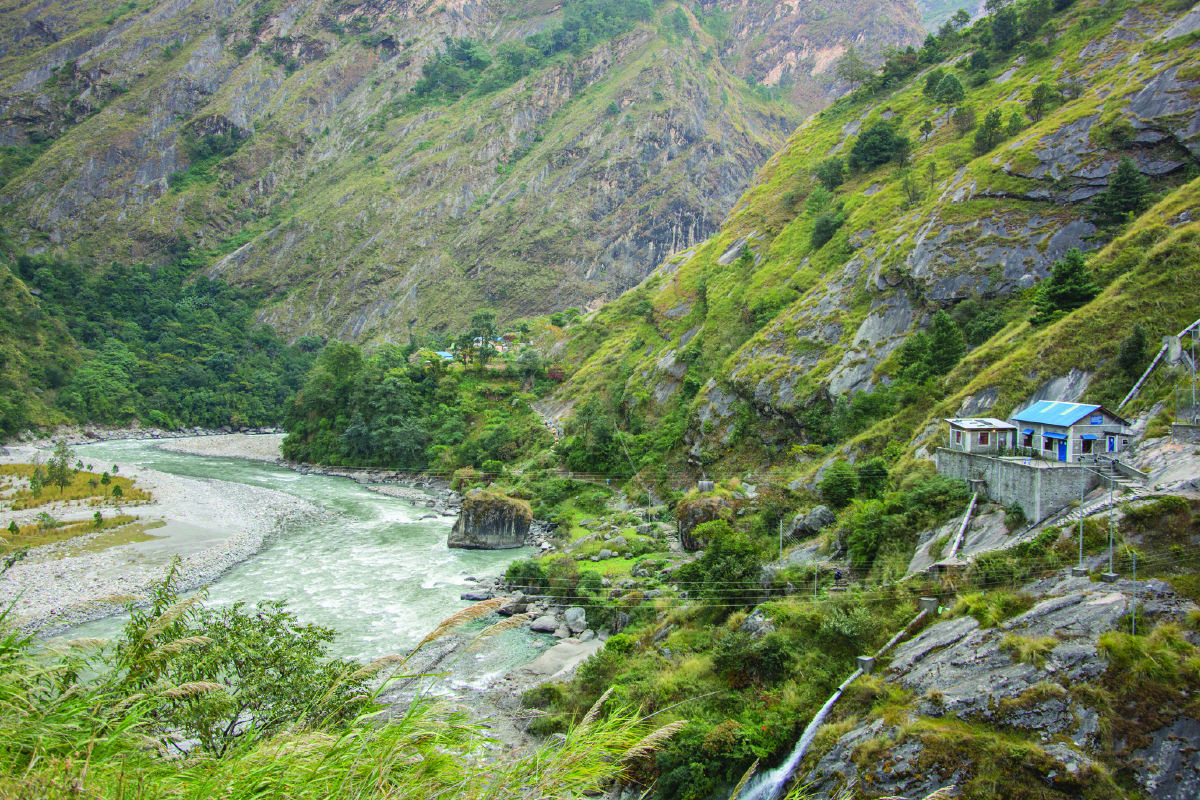
For Nigeria to benefit significantly from SHP development, the responsibility falls on the private sector, mirroring the trajectory seen in countries like China, where private sector involvement spurred exponential SHP growth.53 Nigeria offers a conducive climate for prospective partners seeking to invest in robust projects, given laws like the Electricity Act which allows for quicker decision-making by empowering states to manage generation, transmission, and distribution of power within their borders.54 The impact of this is flexible terms drawn up to suit the needs of all parties involved and quicker execution of projects to address energy needs. The advantages of state involvement in power generation are evidenced in Aba Integrated Power Project (Aba IPP) by Geometric Power Limited, which commenced its first phase of 141/188MW operations in February 2024.55 The power project provides safe, stable, reliable, and affordable electricity supply to industrial, commercial, and residential customers within the ring-fenced Aba metropolis and is achievable through favourable disposition towards private investment. The amended Electricity Act further empowers states to replicate such successes within shorter timeframes, offering a conducive environment for investors to engage with state governments. Investors engaging with state governments can capitalize on SHPs’ low investment and operational costs, long service life, and consistent profitability.
The importance of SHPs in addressing erratic power supply in Nigeria is gaining traction and already advocated for by government agencies. A notable example is the four-day capacity-building training on small hydropower development organized by the United Nations Industrial Development Organization (UNIDO) and the International Centre on Small Hydropower on March 26th, 2024.56 The training targeted policymakers, standardization bureaus, and renewable energy project developers from the ECOWAS and EAC regions. During the event, the Honorable Minister of Power, Adelabu Adebayo (FCA, FCIB. OFR), emphasized the significance of developing small hydro potential, stressing that collaborations are essential for their successful development.
Recent technological advancements now enable the harnessing of power even from smaller water bodies such as canals,57 presenting a diverse portfolio of large and small-scale projects for investors to explore in Nigeria.
In comparison to other renewable sources, Hydropower offers the highest energy payback ratio; it requires the lowest cost for maintenance and therefore a higher return on investment.58 For governments and investors, the route to developing small hydropower potential remains collaboration. Collaboration between government agencies, private sector, and agencies such as River Basin Development Authorities (RBDAs).
If the nation is set to be the third most populous nation globally then energy needs are sure to double. The significance of SHP to Nigeria’s electricity needs lies in its potential to provide electricity with the smallest resource and more cheaply than other models. With just two gallons of running water per minute, a small-sized plant provides reliable power.
Sources:
1.https://www.eia.gov/international/analysis/country/NGA
2.https://www.irena.org
3.https://www.iea.org/reports/hydropower
4.https://www.asme.org/topics-resources/content/turbine-tales
5.https://www.engineeringtoolbox.com/francis-turbine-d_1749.html
6.https://energyeducation.ca/encyclopedia/Pelton_wheel
7.https://energyeducation.ca/encyclopedia/Kaplan_turbine
8.https://www.hydropower-dams.com
9.https://rea.gov.ng
10.https://acore.org
11.https://www.renewableenergyworld.com
12.https://www.autodesk.com
13.https://en.wikipedia.org/wiki/Electricity_sector_in_Nigeria
14.https://nerc.gov.ng
15.https://www.usaid.gov/powerafrica
16.https://www.nigeriaelectricityhub.com
17.https://www.nigeriaelectricityhub.com
18.https://nerc.gov.ng
19.https://www.ajol.info/index.php/gjpas/article/view/78921/69241
20.https://guardian.ng/business-services/nigerias-hydropower-untapped-despite-14120mw- exploitable-capacity/
21.https://ppp.icrc.gov.ng/project/220/shiroro-hydro-electric-power-plant
22.https://www.ijser.org/researchpaper/Potentials-of-Small-Hydro-Power-in-Nigeria-The-Current- Status-and-Investment-Opportunities.pdf
23.https://www.sciencedirect.com/science/article/pii/S266605202100039X
24.https://core.ac.uk/download/pdf/322700544.pdf
25.VIDA- Hydropower assessment in Nigeria- 2023
26.https://www.sciencedirect.com/science/article/pii/S266605202100039X
27.https://rea.gov.ng/theagency/off-grid-electrification-strategy/
28.https://planetsave.com/articles/hydropower-costs-renewable-energy-hydroelectricity-costs-vs- renewable-fossil-costs/
29.https://www.linkedin.com/pulse/revolutionizing-hydro-power-latest-innovations-turbines/
30.https://www.researchgate.net/publication/225416164_CAD_based_shape_optimization_for_gas_ turbine_component_design
31.https://www.giz.de/en/downloads/giz2015-en-nigerian-energy-sector.pdf
32.https://sswm.info/water-nutrient-cycle/water-distribution/hardwares/water-network-distribution/ hydropower-(small-scale)
33.https://www.macrotrends.net/global-metrics/countries/NPL/nepal/gdp-per-capita
34.https://myrepublica.nagariknetwork.com/news/95-percent-of-nepali-population-has-now-access- to-electricity/
35.https://www.statista.com/statistics/761008/nepal-share-of-rural-population/
36.https://www.usaid.gov/energy/mini-grids/case-studies/nepal-hydropower
37.https://www.usaid.gov/energy/mini-grids/case-studies/nepal-hydropower
38.https://www.worldbank.org/en/news/feature/2015/09/15/micro-hydros-earn-first-carbon-revenue-
in-nepal
39.https://kathmandupost.com/money/2022/11/19/nepal-exports-power-worth-rs10-38-billion-to- india-in-five-months
40.https://countryeconomy.com/countries/compare/nepal/nigeria
41.https://www.researchgate.net/publication/342105898_The_Development_of_Micro-Hydropower_ Project_A_Case_Study_of_River_Otin_Osun_State_Nigeria
42.https://www.un.org/esa/sustdev/sdissues/energy/op/hydro_zhao_english.pdf
43.https://www.mondaq.com/nigeria/renewables/1363558/the-electricity-act-2023-and-the- constitutional-amendment-act-2023-implications-for-the-power-sector
44.https://www.intechopen.com/chapters/53350
45.https://www.sciencedirect.com/science/article/pii/S266605202100039X
46.https://core.ac.uk/download/pdf/322700544.pdf
47.https://m.facebook.com/page/about.php?id=508469735978261
48.https://www.esi-africa.com/industry-sectors/transmission-and-distribution/electricity-exports-from- nigeria-to-neighbouring-countries-capped/
49.https://www.statista.com/statistics/1308196/export-value-electricity-from-nigeria/
50.https://www.consilium.europa.eu/en/infographics/eu-gas-supply/
51.https://www.reuters.com/business/energy/nigeria-cuts-back-electricity-sales-overseas-customers- boost-domestic-supply-2024-05-06/
52.https://ijaem.net/issue_dcp/Preliminary%20Study%20of%20Small%20Hydropower%20 Potential%20Along%20River%20Yedseram,%20Northeastern%20Nigeria.pdf
53.https://www.researchgate.net/publication/293345962_Private_participation_in_small_hydropower_ development_in_China_-_Comparison_with_international_communities
54.https://www.aelex.com/legal-and-commercial-implications-of-the-electricity-act-2023/
55.https://www.thisdaylive.com/index.php/2024/03/03/at-last-geometric-ready-for-steady-power-
supply-in-aba
56.https://www.unido.org/news/unlocking-potential-small-hydropower-development-sub-saharan-
africa
57.https://www.everycrsreport.com/reports/R41089.html
58.https://www.energy.gov/eere/water/benefits-hydropower
This article is part of the thought leadership series by Strom Infrastructure Investment and Management Company providing insights into infrastructure and development in and around Africa to enhances equitable access for everyday Africans.






